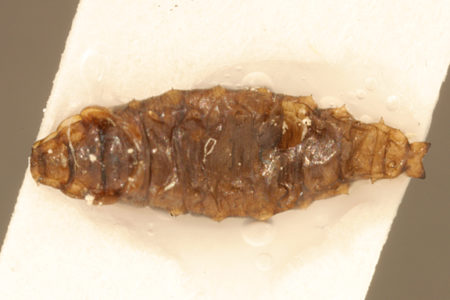Workshop IX, Benjamin Steininger, 25 August 2020
Benjamin Steininger introduces Erdöl: Ein Atlas der Petromoderne? (Matthes & Seitz, Berlin 2020) , a forthcoming book with 43 essays presenting a broad panopticum of various technologies, geographies and cultural practices connected with and based on oil.
One essay in the book is called “Black Mirror”. Chemists investigate the reflection and optical activity of oil, but also cultural theorists are interested in this reflection. Yet what do we see? What can we see? What can we learn about our own subjectivity through oil?
It is crucial to turn to the medium itself to address those questions. One tool to open up knowledge about light-reflecting substances is polarization. Through polarization we can learn something about their molecular structure, as light is affected by asymmetric molecules.
This understanding of polarization draws on the work of geologist and chemist Hans Höfer (1843-1924), an important figure in the history of Montanuniversität Leoben. The city of Leoben itself can be seen as a niche, a particular place which has its specific rituals and traditions. Leoben belongs to a long tradition of thinking about the substance of crude oil.
Polarization also tells us how much oil is part of the evolution of life on earth. Drilling sites manage both technical as well as flora and fauna data. And in very rare cases creatures can live closely together with oil. For example, the petroleum fly lives in the petroleum swamps of California, and manages to sustain life within oil toxicity. This fly could be seen as a metaphor for how life is possible.
After his presentation, Alejandra Rodriguez-Remedi asks Benjamin Steininger, how we can bring out the connection of the lab experiments at Leoben with everyday life. Benjamin Steininger points out that people working in the oil or car industry find it difficult to grasp the totality of what they do. This is also true for laboratory work, such as that in Leoben. He suggests we ask the scientists whether it is important for them to know where the oil comes from.
Ernst Logar then asks Benjamin Steininger about his thoughts on Reflecting Oil as a project. Benjaming Steininger answers that direct perception is one of the most valuable aspects of the project, but reminds us that in some cultures this sort of perception is taboo.
Quoting Brecht, he stresses that direct perception says both everything and nothing at the same time. As in Brecht’s quote – “A photograph of the Krupp works or the AEG tells us next to nothing about these institutions. Actual reality has slipped into the functional.” – we need to find the particular spot, where reality is revealed. Oil spills, as Ernst Logar suggests, may help with direct perception, as both a sign of wealth and of environmental disaster. Oil’s invisibility may be a sign of its mighty presence.
reflection I mirror I polarization I Hans Höfer I Leoben I petroleum fly I toxicity I oil spills I invisibility I presence

